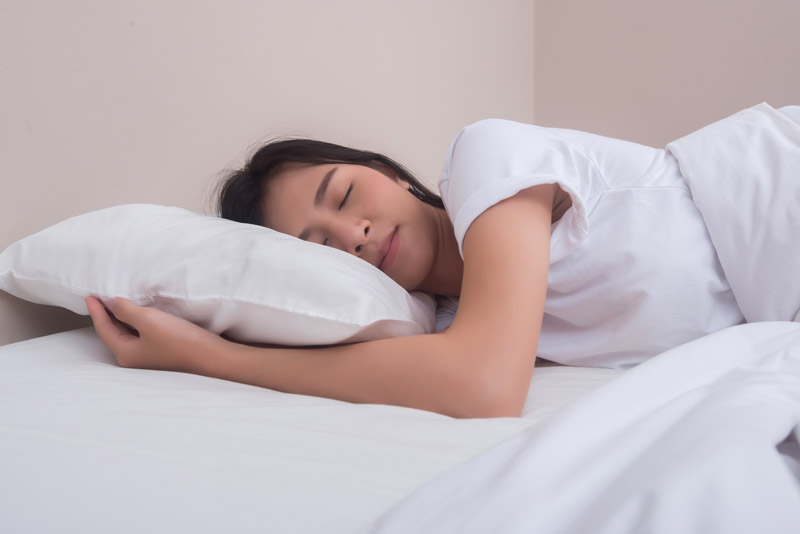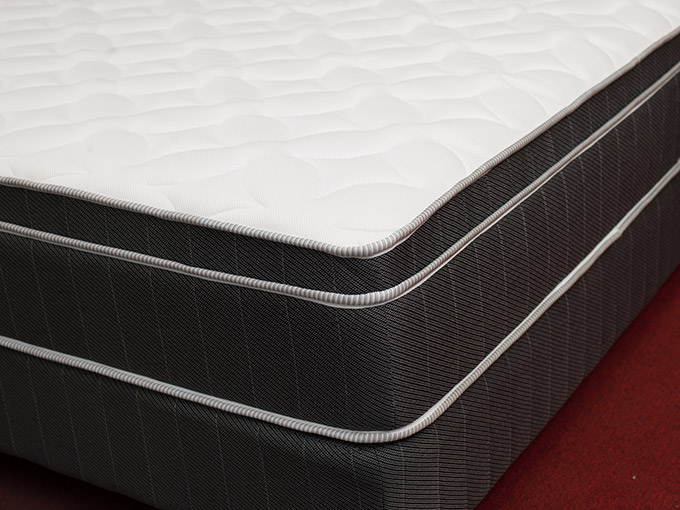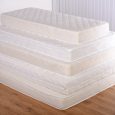Perhaps the subject is not often discussed, but the mattress type ideal for optimizing an individual’s sleep can be expressed in a table.
In this guide, I will identify mattress types using common mattress-industry language, and in a “table” using ratios I will demonstrate the body weights which pair for most restful sleep with which types.
The Industry Language for Mattress Type by Firmness
Mattress types can be identified according to how and of what they are made, and when designated as such terms like “pillow top,” “hybrid” and “memory foam” are used–but this guide is more concerned with the issue of how mattress firmness best matches body type by overall body weight. I therefore divide mattress types into the following seven categories:
Seven Categories, Seven Weight Ranges
A Table to Indicate Perfect Firmness by the Sleeper’s Body Weight
| Mattress Type | Weight Range |
| Extra Soft | <130 lbs. to 130 lbs. |
| Soft | <130 lbs. to 130 lbs. |
| Medium Soft | 130 lbs. to 160 lbs. |
| Medium | 160 lbs. to 190 lbs. |
| Medium Firm | 190 lbs. to 230 lbs. |
| Firm | >230 lbs. |
| Extra Firm | >230 lbs. |
Support and Firmness: The Whys and Hows of Comfort Factors
It is true that different mattresses are made at different levels of firmness and providing different amounts of support. But how does this fact translate to a more or less restful sleep experience based on overall body weight relative to mattress type?
The answer lies in the manner in which your mattress will inevitably respond to your body while you are resting on it.

If we start with an ideal in terms of both support and firmness, it will be easier for me to demonstrate why the above table indicates the firmness types it does with their respective body weights as “perfect” matches.
Ideal support is accomplished by a mattress when together with the bed frame it creates an even and flat surface that keeps the sleeper’s spine comfortably aligned. Ideal firmness is accomplished when the sleeping individual using the mattress sinks down into the mattress between 1.5 and 3 inches.
When a mattress type in the above table is paired with the indicated respective weight range, both the ideal of support and the ideal of firmness as described above should be experienced by the sleeper.
Why Is ‘Firmer’ a Superior Match for Heavier People?
The answer to this question lies in a series of responses which all have to do with both simple physics and muscular-skeletal health:
- A mattress which is soft is more malleable, and will ‘give’ more in terms of ‘sag’ than one which is more firm. The more sag, the less flat and even the sleeping surface.
- The less flat and even the sleeping surface, the greater potential for the sleeper’s back to curve in line with the mattress and suffer poor alignment or stress to muscles as a result.
Why Isn’t a Firmer Mattress Ideal for Everyone?
Well, many people feel that it is.
But in the event that the sleeper in particular enjoys vibrant muscular-skeletal health and a low body weight he or she is likely in a position to be more able to sleep on a softer mattress without incurring any compromise to his or her back health.
In brief a firmer mattress equals better back support, but even better back support can be considered a more negligible factor by those who less require it by virtue of being more modest in total body weight themselves.

In Summation: One Man’s Medium is Another Man’s Firm
We hope this guide is of assistance in choosing the sort of mattress you might find most ideally suited to you.
That said, please stay mindful that there is always a need to make room for individual taste–never more so than when you yourself are shopping for the perfect mattress.
Just as you would no more purchase a new automobile without test driving it, so you should be likewise particular about experiencing first hand any mattress you commit to purchasing.
In the end what matters most is your own individual experience of sleep.




